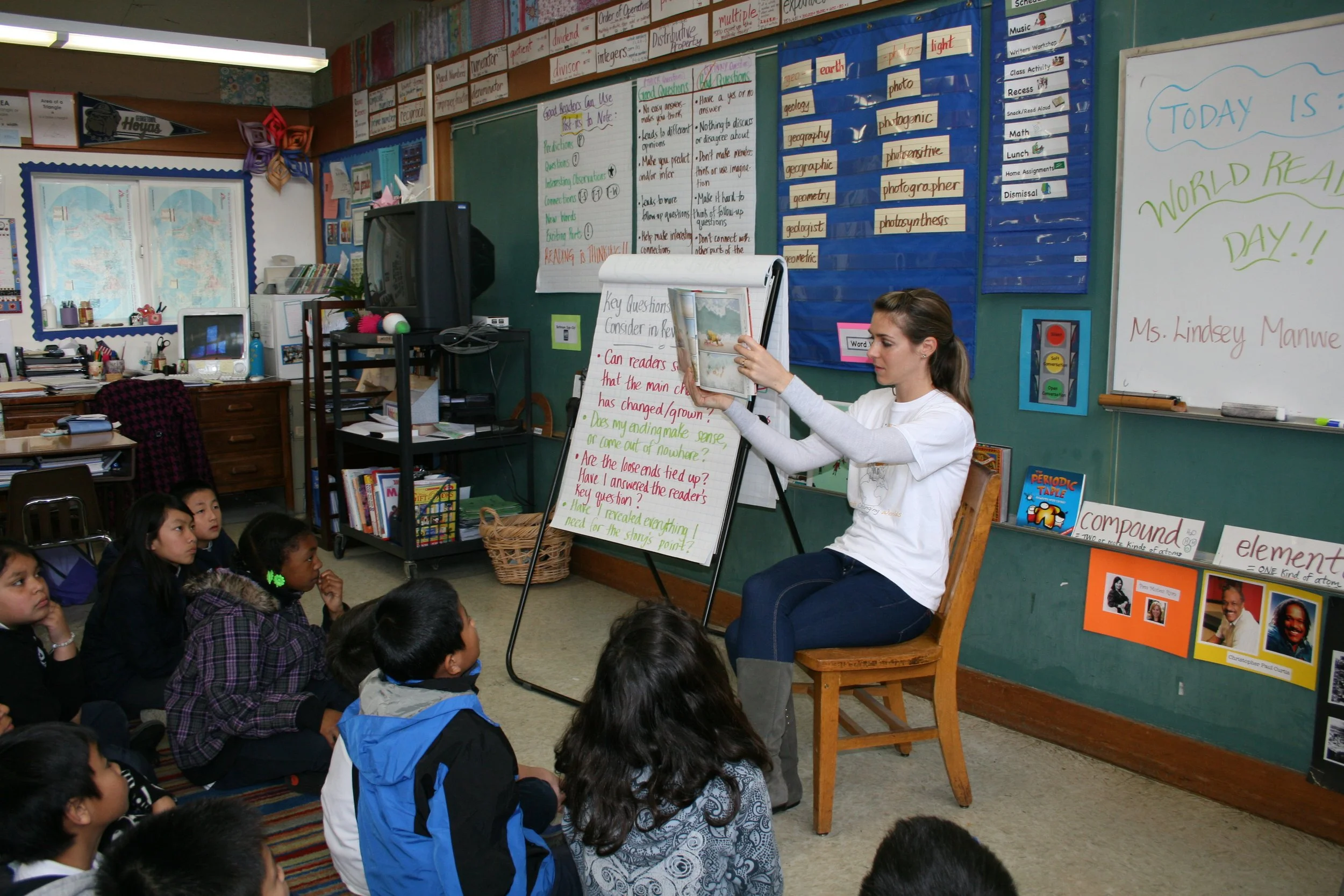This edition of our monthly newsletter is dedicated to everyone who feels that thump in your heart at the thought of summer. The thump that comes from the memory of a sun-soaked reading immersion, those literary adventures that took you away from the daily ordinary world, and the feeling you had while drifting into your books that the days were long and could last forever. We gave a lot of kids those "lit feelings" this summer in our LitCamps. Take a look.
Campers & Counselors Tell the Story of LitCamp Best
LitCampers use iPads and creative storytelling apps to tell their own stories.
Our Harlem LitCamp has wrapped up for another year, leaving a positive, permanent impact on all who experienced the magic in action. The growth of our campers as readers over the course of LitCamp was dramatic. Daily read alouds, active play and creative writing activities have made them strong and ready for the school year ahead. We also saw how much the traditions and ceremonies of LitCamp matter to the children, their teen counselors and our LitCamp interns. The younger LitCampers know exactly how many years it will be until they are old enough to take on the coveted role of teen counselor. The children created a weekly newsletter to share their special LitCamp culture. Click here to read camper interviews, poems, jokes and more!
Our LitCamp and Research & Development summer interns have also been blogging about their LitWorld experiences. Their reflections illuminate the soul of LitWorld. Isabelle wrote: "We cannot ring out every drop in every moment of life without breaking open its piñata and dancing in the shower of candy. At LitWorld, these tiny fiestas are constant, and it is through these celebrations of the big and small - the funny faces, the misunderstood song lyrics, the inexplicable inside jokes - that we realize the true gifts we have and the strengths we can share together."
Click to read a beautiful post from each of our wonderful interns.
LitWorld Haiti Keeps the LitCamp Summer Going
LitCamp inspires fearless writing and reading in Port-au-Prince, Haiti.
A month-long LitCamp is underway at the LitWorld Innovation Hub in Port-au-Prince Haiti! The camp is bringing our inter-generational LitWorld family together. While the children read aloud, write creative stories, sing and play, our Moms Sewing LitClub is measuring and making school uniforms for the children (and joining in the fun too, of course).
At the end of the month our team will join our partners The Children of Haiti Project and the TOYA Foundation in Haiti to lead training and professional development workshops with 20 young women leaders who will be growing our programs on-the-ground to serve even more children and families this year. We will also be co-running an intensive week-long LitCamp with our young women leaders to reach even more LitClub girls and boys. Our visit to the field will end with a community-wide LitFest celebration to share the powerful stories and extraordinary work that our LitCampers, leaders and Moms Sewing LitClub have been creating all summer long.
Stand Up for Girls with LitWorld on October 11th
Stand up for the girls who inspire you on October 11th, the Day of the Girl.
LitWorld's Stand Up for Girls program in honor of the October 11th Day of the Girl calls on people everywhere to celebrate the power of girls' own stories. Our programs have proven that giving girls access to transformational literacy, opportunities for creative expression and the support of peers and mentors leads to empowered girls who create social transformation in their communities. And yet two thirds of the world's illiterate people are women and girls.
Your voice matters. Use our Stand Up for Girls event kit and sample social media posts to spread the Stand Up for Girls movement in your community. For more on the urgent issue of girls' education read and share Pam Allyn's latest Huffington Post blog: "Where Are the Stories of Girls."















